With You - Learn Chords, Vocals, Mix
Chris Brown’s With You is a stirring masterpiece of music production. Why? Due to its genius of mixing subtlety, vocal production prowess, and captivating chord structure. Hit Talk provides production insight to the inner workings of this innovative Billboard hit. In every Hit Talk post, we first outline the hit’s song structure, mix, and frequency separation. Next, we discuss, indepth, the hit’s music production including the hit’s strongest production element. A full Hit Report containing bonus illustrations, vocal production analysis, Hit Talk’s Melody Map, Chord Map, and Groove Map, plus VIP samples can be purchased at the end of this post. Let’s get started.
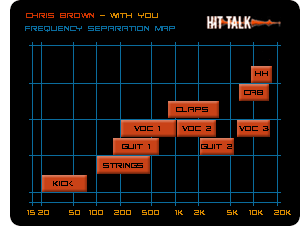 |

Mix & Frequency Separation
The genius in With You’s mix is in its simplicity. The kick is tuned to the root pitch, or tonic, of the song and it changes pitch in sync with the song’s chord changes. For the most part, With You’s kick fundamental is Ab, but is layered with another sub-bass sample that modulates in pitch as the song progresses. Though listening through a pro monitoring system will reveal the kick’s changing pitch, it’s still difficult to hear because most kicks don’t sustain a discernable pitch for more than a few milliseconds. That’s the job of a bassline.
With You seems to be missing a bassline; at least, a conventional one. Brown’s Production team, Stargate, has instead opted to substitute a bowed string such as a cello to create a fullness for the pitch changes. Though the range of a cello isn’t as low as that of, say, a bass guitar, the cello combines with the tuned kick drum to form a full, yet subtle bassline: a clean, dry mix of cello and kick. Listeners perceive a low bass melody, even if they do so subconsciously. The result is balanced low end, nothing is missing.
Proceeding up the frequency spectrum, in Hit Talk’s Frequency Map diagram above, we find the track vocals, illustrated by voc 1, voc 2, and voc 3. Voc 1 represents Chris Brown’s natural vocal range - the root pitch of his voice. Voc 2 represents the recorded mid-range overtones and harmonics of Chris Brown’s voice. Between voc 2 and voc 3 is a space where Brown’s voice is softer, and it is here that the low treble elements of the guitar track provide vital balance to the high frequency spectrum. Finally, the highest overtones of the Brown’s voice (voc 3) share the 10-20k range with the cabasa, hi hat and reverse crash. Since those percussive elements are brief, transient beats, they don’t drown out the high vocal overtones. Hence they work well playing against the vocals. The revelation of Stargate’s deliberate frequency separation of tracks lends aspiring producers insight on how to achieve a pristine, chart-topping mix of their own.
Music and Hook Production
The primary instrument in With You is, of course, the guitar. In the official vid, the guitarist is playing a black Yamaha Compass series 6 string, but the timbral quality of the guitar sounds distinctly rich and resonant like a 12-string. So how can a 6-string sound like a 12-string, is the video just inaccurate? In fact that rich, chorus-like sound emanating from the guitar is not because of the guitar type, but because of the guitar chord shapes.
The opening progression is Eb no3, Eb Maj 7 (no3), Ab/Eb, Eb Maj 7 (no 3). “No 3″ simply means no third - there is a missing third from the chord. The problem is, if you play this progression with more conventional chords, it sounds plain - and wrong. Playing open chords (chords that use open, or un-pressed strings) makes the chord voicings sound richer, because of the chorus effect created by more than one string playing the same note - more like in With You. Yet, so many guitarists use a capo on the first fret, and play open chords that match approximately, but not exactly, sometimes transposing the chords while ignoring the key; hence, one article on ultimate-guitar.com lists the opening progression, as Cadd9 – G – D – Am7.
So, let’s set the record straight. Here is how to play With You’s opening hook on guitar. First, drop-tune the guitar a semitone or half-step: yielding a tuning of Eb, Ab, Db, F#, Bb, Eb. Second, follow Hit Talk’s chord charts below. All chord charts start at the 4th fret, the low E (Eb) string is played open for every chord. That results in the droning Eb you can just barely hear in the beginning of the track. The gray circles mark, from top to bottom, the 5th, 7th and 9th frets, except in the case of Fmaj where they mark the 3rd, 5th, and 7th. Please bear in mind these chord charts represent a guitar that is drop-tuned, all chords are one semi-tone flat - make a mental note of that if you want to play these chords on a guitar in standard tuning.
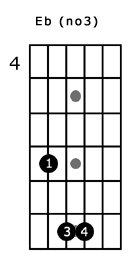
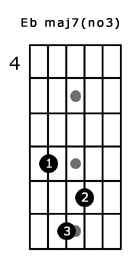
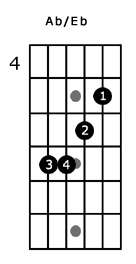

As with all guitar charts, the fingers are numbered 1-4, index-pinky. In the first four chords, the low E (Eb) string is played open for every chord. That results in the droning Eb you can just barely hear in the beginning of the track. Eb(no3) to Eb major 7th(no3) is an easy transition for a guitarist, since you only need to move your pinky and middle fingers to create the maj7. Ab/Eb back to Eb maj7(no3) is more difficult. Each chord shape contains pressed stings that match the pitch of some of the unpressed strings. That’s what creates the chorus-like effect that makes this guitar track sound like a 12-string. There. Sound more like it? It’s a powerful progression. And if you want to learn more about With You’s guitar work, we cover it in even more detail using our groove analysis map -available in our Hit Report found directly below.
The result? Stargate has achieved a sensational guitar composition. Tracking conventional instruments such as guitar with a finesse in chord voicing is key to producing a song’s unique character and sound. Hats off to this impressive production team for pulling this hit together.
Order the full “With You” Hit Report & Get it all… |
|
 With You Song Format Map! (View All) With You Song Format Map! (View All) With You Frequency Separation Map! (View All) With You Frequency Separation Map! (View All) With You Chord Progression Map! (View All) With You Chord Progression Map! (View All) With You Song Arrangement Map! (View All) With You Song Arrangement Map! (View All) With You Groove Analysis Map! (View All) With You Groove Analysis Map! (View All) With You Song Arrangement Step-by-Step Report! With You Song Arrangement Step-by-Step Report! With You Music Production Report! With You Music Production Report! With You Hook Production Report! With You Hook Production Report! With You Vocal Production Report! With You Vocal Production Report! With You Chord Progression Report! With You Chord Progression Report! With You Mix & Frequency Separation Report! With You Mix & Frequency Separation Report! Super Bonus: VIPKIT#18, 100+ Samples, $30 value! Super Bonus: VIPKIT#18, 100+ Samples, $30 value! |
|
| Enhance Your Music Production Skills Today! |
|









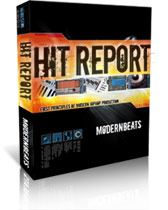
 GET 20% OFF COUPON INSTANTLY W/ SIGN-UP!
GET 20% OFF COUPON INSTANTLY W/ SIGN-UP!
 Check Out Hot Artists & Music Producers discovered through Song Submit!
Check Out Hot Artists & Music Producers discovered through Song Submit!



Update: Our sincere thanks goes out to Merv Warren (grammy award winning producer who has worked with Leann Rimes, Boyz II Men, Queen Latifah, Whitney Houston, and others) who has contributed a vastly improved revision of With You’s chord charts. Since there is so little agreement on the internet in regards to these chords, we’ve felt compelled to post a part of MW’s contribution to Hit Talk:
“there’s no Bb in the guitar part on the third chord. (it’s only a passing tone in the vocal.) that’s why i called it a “straight” Ab/Eb…
…since you asked, i just listened on big speakers — and now, i’m actually going to correct myself on the fourth chord! here are all four chords:
Eb (no 3)
Eb maj7 (no 3)
Ab/Eb
Eb maj7 (no 3)
chords 2 and 4 are the same — very similar to a Bb/Eb (which is what i’d written before). but upon closer listening, i see that there’s no G or F in the guitar. the only notes present are Eb, Bb, and D…
- Eb maj7 would include Eb, G, Bb, and D
- Bb/Eb would include Eb, F, Bb, and D
but neither of those is accurate. so … the best choice is Eb maj7 (no 3).”
Thanks again, Mr. Warren. The full With You Hit Report has been updated as of Sept17th.
this good.!!!!
nice…….thanks…..admin….
very nice… thanks 4 that
how do i sequence with midi
If you mean the chords, Mike, the full report has some handy charts: https://www.modernbeats.com/hit-talk/hit-reports-explained.htm
what makes a song strong ? i’ve realised that when i produce a song and take it to a radio station for playing and promotion the radio producers say it weak. what does that mean?
Timon, it’s got to be well-written, well-produced, and well-arranged. As a producer, you should handle production and arrangement. Arrangement, in particular, is what a lot of producers find challenging (or simply don’t take the time to learn about). Our new Hit Report drops in the next couple of days. The Track-by-track section and the arrangement section of the full report will go a long way toward answering your question, so hold tight.
Generally speaking, too repetitive a song that has been flatly produced/poorly mastered is a weak song. The good news is if you can learn how to arrange properly, you can often hire a studio to master for you. If you haven’t already, check out the arrangement map on this page: https://www.modernbeats.com/hit-talk/hit-reports-explained.htm
Your song should have structure and plenty of change from one section to the next. Some sections should be quiet, some should be loud, there should be a bridge or break, and there should be captivating chord changes. That’s what we’re here to teach.
which software is best for music production
How sharply are the different instruments and vocals cut from each other, like is it more gradual or a steep roll off?
Hey VJ,
It’s actually not a steep roll-off, at all. However, if you use a roll-off on your vocal tracks and instruments to knock out any low-frequency artifacts it can tighten up your mix substantially. Really we’re just illustrating the frequency ranges occupied by each instrument.
Timon,
I would say that if they think the song is weak, they might also mean it’s lacking dynamics. You get the dynamics right through the correct use of instruments, synth, and other acoustic/electric combinations.
Instrumentation is an underrated tool in contemporary music composition by amateurs but it’s so important and very effective.
I wouldn’t even consider mastering something that has not “passed the test” with those guys. Mastering will not help a poor mix or a bad composition. You can go very very far with a great mix and no “mastering” in the traditional sense.
How do you make a vocal in recordings sound what some call ‘oceanic’. Its an effect for voices which I hear to most of good sounding music, like in slow music. E.g. the effects put to Celine Dion’s vocal, which sounds with ‘air’ or ‘whispering’. I don’t know how I can best describe it, but am sure you have gotten it. I have recorded a number of songs using AKG C3000, Shure MS 58 and Behringer but couldn’t perfectly get the warm effect I try to shoot for. What is the formular. What effects or plugins should I combine. Please help me.
I use Cubase for recording voices, sometimes Abobe audition.
Waiting impatiently to hear from your invaluable knowledge. Thank you.
please whats the best production software for making beats and also for doing a great mixtape.And what is the original use of “autotune”
@ Amos - sorry your question got missed.
@ Henry - MB’s producers use several different softwares for production. Take your pick, Cubase, Logic, Pro Tools, Ableton Live is a particularly intuitive program.
How do i get my big musical break I mean like what do I have to do?
It’s a lifelong commitment, Idris.
Hey Guys!
Amazing info on this thread…invaluable to say the least…
I was wondering.
I have just picked up piano again and have practicing ferociously for the last 4 months, and will never stop. Prob practice a good 3 hours a day!
My question is this…
Should I also be messing around with the beat softwares that are out there? If so, which is the best one to use? And to piggy back off your article about Stargate, any insight on what they use to make their beats?
Any info would be GREATLY appreciated!
Ok thanks!
Sincerely,
Tim
Tim, the best advice we can give is to master as many sides of the production game as you can. Musical chops are assets, and knowledge of production softwares is essential as well. If you combine musicianship with the ability to produce, you can create powerful music. You should check out some of the industry interview series on this website.
As for Stargate, they use ModernBeats samples! ;) Not sure what their set up is just off the top, but there are interviews with them… The MB team uses all kinds of different production softwares (Ableton Live, Cubase, Logic, ACID) depending on the developer. Ableton has an automatic loop-tempo-matching default setting that makes it a lot of fun for beginners who want to play around with loop sequencing.
how do most artist get a record deal